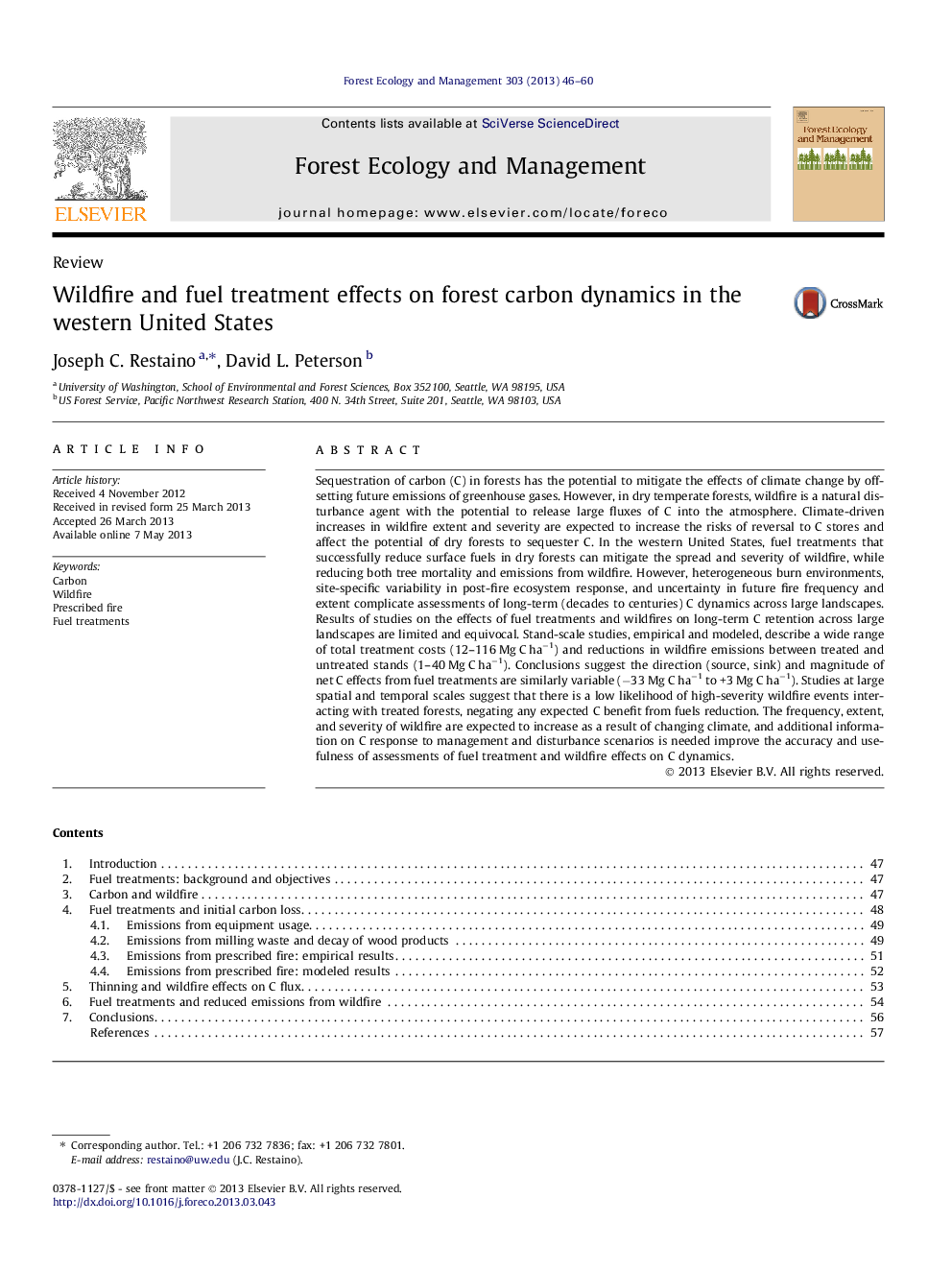| کد مقاله | کد نشریه | سال انتشار | مقاله انگلیسی | نسخه تمام متن |
|---|---|---|---|---|
| 86736 | 159209 | 2013 | 15 صفحه PDF | دانلود رایگان |

• We review the scientific evidence for treatment and wildfire effects on carbon (C) dynamics.
• Elements of C release associated with fuel treatment application are summarized.
• We explore the influence of temporal and spatial scales on C dynamics.
• We examine trade-offs between C release from fuel treatments and mitigated wildfire severity.
• The low probability of wildfire and treatment interaction may result in a net C loss over time.
Sequestration of carbon (C) in forests has the potential to mitigate the effects of climate change by offsetting future emissions of greenhouse gases. However, in dry temperate forests, wildfire is a natural disturbance agent with the potential to release large fluxes of C into the atmosphere. Climate-driven increases in wildfire extent and severity are expected to increase the risks of reversal to C stores and affect the potential of dry forests to sequester C. In the western United States, fuel treatments that successfully reduce surface fuels in dry forests can mitigate the spread and severity of wildfire, while reducing both tree mortality and emissions from wildfire. However, heterogeneous burn environments, site-specific variability in post-fire ecosystem response, and uncertainty in future fire frequency and extent complicate assessments of long-term (decades to centuries) C dynamics across large landscapes. Results of studies on the effects of fuel treatments and wildfires on long-term C retention across large landscapes are limited and equivocal. Stand-scale studies, empirical and modeled, describe a wide range of total treatment costs (12–116 Mg C ha−1) and reductions in wildfire emissions between treated and untreated stands (1–40 Mg C ha−1). Conclusions suggest the direction (source, sink) and magnitude of net C effects from fuel treatments are similarly variable (−33 Mg C ha−1 to +3 Mg C ha−1). Studies at large spatial and temporal scales suggest that there is a low likelihood of high-severity wildfire events interacting with treated forests, negating any expected C benefit from fuels reduction. The frequency, extent, and severity of wildfire are expected to increase as a result of changing climate, and additional information on C response to management and disturbance scenarios is needed improve the accuracy and usefulness of assessments of fuel treatment and wildfire effects on C dynamics.
Journal: Forest Ecology and Management - Volume 303, 1 September 2013, Pages 46–60